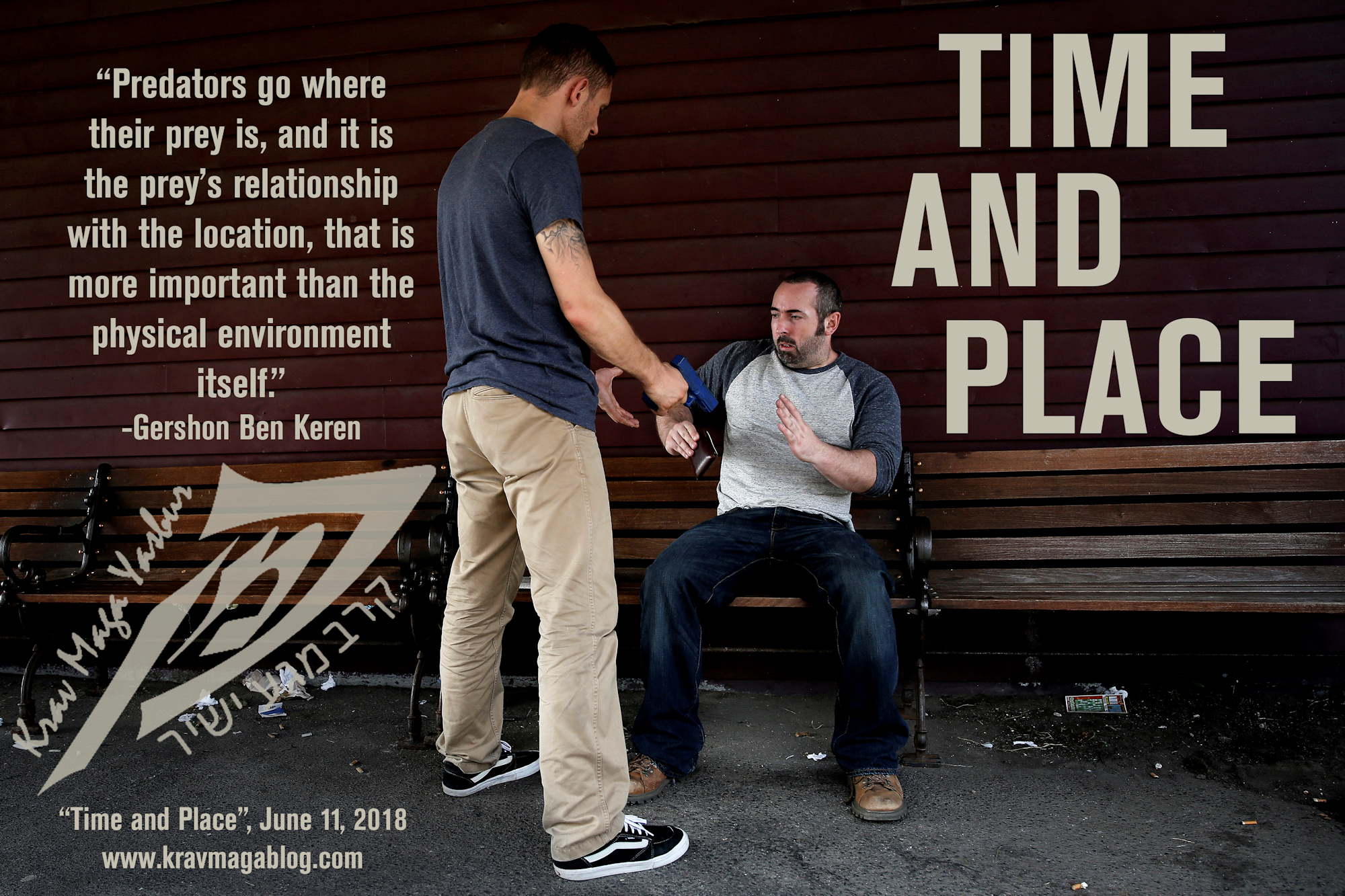In instances of stranger-related violence and crime – where the aggressor is unknown to the victim – perhaps the most significant component is the location where the interaction takes place. Crime isn’t evenly spread across a geography, it is concentrated in “hot-spots”, even down to the house level e.g. those working in law-enforcement will tell you there are homes they are repeatedly called to etc. However, locations aren’t static; they are dynamic things which possess life-cycles i.e. different types of crime will happen at different times of day. City centers host a disproportionate amount of crime, however the type of crime varies throughout the day e.g. during the daytime, there may be pickpocketing and shoplifting, whilst at night, when the pubs, bars and clubs start to pick up business, acts of violence become the more predominant criminal activity etc. and these may be more likely to occur at closing time, and on particular days (such as Fridays and Saturdays). This means that when we are looking at locations from a personal safety perspective, although the physical geography plays a part, it is the movement of people through them which is the more important factor to understand; as one Chicago mugger/robber told researcher K.B. Peter in his 2007 book, Pockets of Crime: Broken Windows, Collective Efficacy, and the Criminal Point of View, “You go where many people go, but you go there when many people are not there,” i.e. the when is as important as the where.
Criminals are usually both planners and opportunists, and this is reflected in crime hot spots; there are times when they will find themselves in a location, where a potential victim is present, and there are times when they will plan to be in a certain location in order to actively search for a victim, to commit a crime – this determines whether the location is a “generator” of crime, or an “attractor” of criminals. Certain locations will naturally create opportunities e.g. if a mugger finds themselves in the parking lot of a shopping mall, as part of their everyday activities, and comes across a suitable target (because due to the large number of people coming to the mall – such as mid-afternoon on a Sunday – there is likely to be somebody who fits the “profile”), then the location will have generated that crime. A check-cashing shop, on a Friday evening, or Saturday morning, when people may have just been paid and will be looking to cash their checks, is likely to attract financially-motivated criminals – with the location being a crime attractor. By understanding the days, and the times, when certain criminals are likely to be attracted to a location, we can either avoid being there at that time, or be extra vigilant when we don’t have a choice i.e. we may have to be in a particular location due to our work, our commute, or because we live there, etc. Avoidance isn’t always an option.
The majority of predatory criminals, whether financially, sexually, or otherwise motivated, appear to be “marauders” rather than “commuters” i.e. they operate from a base, within an area – sometimes their home, a bar they frequent, or even their place of work – and commit criminal acts within a relatively close proximity to it, returning there afterwards e.g. it has been found that for over 80% of homicides where the offender is on foot, the offender lives within 525 yards of the crime. Criminals like to hunt on familiar ground, where they know who will be present and when – this includes law-enforcement, whether uniformed or in plain clothes. The amount of time street criminals spend conducting surveillance and educating themselves about a location, such as recognizing the exact places/spots where people are distracted or naturally have their awareness lowered (this happens to many people when they enter/exit shops and restaurants and switch off in that moment), makes it pretty much a full-time job, even if the attitude displayed by those conducting it appears casual. Next time you are in a neighborhood, take a moment to see if anyone there is just observing and studying what is going on around them. If a criminal does commute to commit a crime, it is likely that they will choose locations that resemble ones that they are familiar with i.e. environments that they understand.
It would be easy to get caught up with the idea that a run-down area/location is reflective of social disorder, and lack of control in a neighborhood, and that this results in high crime rates, because the community turns a blind eye and/or is unable to prevent criminal activities, etc. However, if this was true, it would suggest that Disneyland – as a perfect world, with strong governance and security – would be a crime-free zone, and that is certainly not the case. Predators go where their prey is, and it is the prey’s relationship with the location, that is more important than the physical environment, itself. The physical environment can and does play a part, in factors such as the numeracy of escape routes, the lack of CCTV cameras and natural surveillance, etc. but it is the people within the location, that determines the level and consistency of criminal activity; and different groups/categories of people exist in the location at different times. By understanding the life-cycle of a location, we can determine when we are at most, and least, risk.
Share:

Gershon Ben Keren
2.8K FollowersGershon Ben Keren, is a criminologist, security consultant and Krav Maga Instructor (5th Degree Black Belt) who completed his instructor training in Israel. He has written three books on Krav Maga and was a 2010 inductee into the Museum of Israeli Martial Arts.
Click here to learn more.

